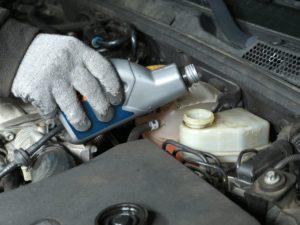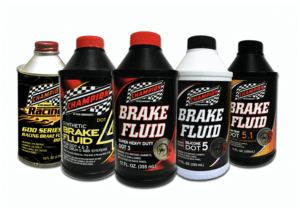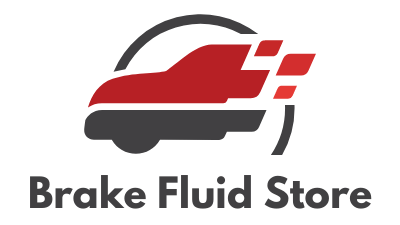Almost all car owners know that brake fluid is important for their braking system. However, not many of them understand what different numbers and letters in the brake fluid naming and type mean and how they actually work. For example, do you know are all brake fluids the same or not?
Understanding the difference between different types of brake fluid and their working mechanism is important to make informed decisions in order to take care of and maintain your vehicle’s braking system.
Contents
Are All Brake Fluids the Same?

The simple and one-word answer to this question is, no. All brake fluids aren’t the same. Different types of fluids come with different chemical compositions and you shouldn’t mix them together without understanding how each type works.
They can react badly with each other if you mix the wrong types and resultantly, your braking system can fail to work. If you want to know what makes brake fluids different and what types can be mixed, continue reading this detailed guide till the very end.
Why Do Different Types of Brake Fluid Exist?
The integrity and efficiency of a vehicle’s braking system are non-negotiable. It’s a safety-critical aspect and you should use high-quality and high-performance brake fluids to ensure that your vehicle stops effectively and safely.
Many modern vehicles come with self-stabilizing systems that allow them to detect and decrease the loss of traction with ESP (Electronic Stability Program). Resultantly, a braking system offers an optimized and efficient response.
These modern systems require specialized brake fluids that have enhanced viscosity performance. These specialized brake fluids transmit accurate impulses to apply brakes. These fluids also have a high boiling point that they can sustain with time to avoid vaporizing. That’s why different types of brake fluid formulas exist.
Most Commonly Used Types of Brake Fluids
Typically, brake fluids have “DOT and number” specifications where DOT stands for “Department of Transportation” and the number specifies the dry and wet boiling point. Most vehicles used in the United States need DOT 3 or DOT 4 brake fluid and both of these types come in amber color.
These brake fluids are glycol-based and have the ability to absorb moisture from the air. That’s why it’s not advisable to open the fluid reservoir of these brake fluids unless needed. The water these fluids absorb reduces their boiling point and it can result in reduced braking efficiency over time.
DOT 3 and DOT 4 brake fluid also become acidic by absorbing water and resultantly, they promote the formation of debris and rust in the braking system. Other than DOT 3 and DOT 4, there are many other types of braking fluids that come with their own properties.
Best Brake Fluid Brands on the Market
The following table shows the characteristics of different types of brake fluids.
| Type | Wet Boiling Point | Dry Boiling Point |
| DOT 5.1 | 356 Degrees Fahrenheit or 180 Degrees Celsius | 518 Degrees Fahrenheit or 270 Degrees Celsius |
| DOT 5 | 356 Degrees Fahrenheit or 180 Degrees Celsius | 500 Degrees Fahrenheit or 260 Degrees Celsius |
| DOT 4 | 311 Degrees Fahrenheit or 155 Degrees Celsius | 446 Degrees Fahrenheit or 230 Degrees Celsius |
| DOT 3 | 284 Degrees Fahrenheit or 140 Degrees Celsius | 401 Degrees Fahrenheit or 205 Degrees Celsius |
Compatibility Criteria of Different Brake Fluids

The following breakdown of the compatibility of different brake fluids will allow you to understand which type you can use for your vehicle depending upon your current brake fluid type.
Can You Mix Different Types of Brake Fluids?
It’s important to note that cross-compatibility is one of the main requirements of the DOT system. It means that different brake fluid manufacturers need to make sure that their brake fluids don’t cause any harm to the braking system when they are mixed with other products.
In other words, you can mix different types of brake fluids without damaging your vehicle’s braking system. However, you must know what types of brake fluids are intermixable. In addition, it’s not recommended to mix the brake fluid types frequently if you want to enjoy optimum braking performance.
Using the same type of brake fluid ensures long-lasting efficiency and durability that allows you to feel confident that your vehicle’s braking system is working at its best. But if you still want to experiment, consider reading the following compatibility criteria.
DOT 3 and DOT 4 Compatibility
DOT 3 is highly corrosive brake fluid and it can damage your car’s paint job. That’s why you need to be extra careful while dealing with this type of fluid. On the other hand, modern DOT 4 brake fluids don’t damage paint but the regular ones do.
Technically, DOT 4 and DOT 3 are intermixable and compatible with each other. However, the boiling point of DOT 4 brake fluid is higher than DOT 3. More importantly, DOT 4 is almost twice the cost as well so you shouldn’t add it to your car if you’re using DOT 3.
DOT 3 and DOT 5 Compatibility
No, it’s not possible to mix DOT 3 with DOT 5 brake fluid. That’s because DOT 3 is glycol-based and DOT 5 is silicone-based. They’ll react badly with each other and in the worst conditions, the mixture of these two brake fluids can lock up your brakes. So, it’s advisable not to do it at all costs.
DOT 3 and DOT 5.1 Compatibility
DOT 5.1 is also glycol-based just like DOT 3 but it is usually used in heavy-duty vehicles because of its extremely high boiling point. Both of them are intermixable and won’t affect the performance of your vehicle.
However, you’ll need to flush your lines before adding DOT 5.1 to your reservoir. Otherwise, it’ll not reach the lines that will defeat your purpose.
DOT 4 and DOT 5 Compatibility
Just like DOT 3, DOT 4 brake fluid is also glycol-based which means you can’t use it with DOT 5 as it’s silicone-based. Being silicone-based brake fluid, DOT 5 doesn’t absorb water and has different chemical composition.
So, never try to mix DOT 4 and DOT 5 brake fluids together. The DOT 5 is mostly used in classic cars and can be stored for a long period of time. If you want to add DOT 5 to your car, you’ll need to flush the entire braking system multiple times to make sure DOT 5 works.
DOT 4 and DOT 5.1 Compatibility
Yes, DOT 4 and DOT 5.1 are both glycol-based and are compatible with each other. Again, you’ll need to flush your lines properly before adding 5.1 to avoid dilution.
DOT 5 And 5.1 Compatibility
Despite their similar names, DOT 5.1 and DOT 5 brake fluids have entirely different chemical compositions. So, they’re incompatible with each other.
Is Switching to DOT 5 Brake Fluid Advisable?
No, switching to DOT 5 brake fluid is not advisable if you’re using a glycol-based brake fluid except in an extremely rare situation. It’s also important to note that there is no going back to any other type of brake fluid if you switch to DOT 5.
Interestingly, DOT 5 brake fluid never gets out of the system once it gets in, even if you flush your entire system multiple times. The only way to get back to glycol-based brake fluid from the silicon-based is to change all components of your braking system.
Another important factor to keep in mind is that if your vehicle has an ABS braking system, switching to DOT 5 brake fluid is impossible. Most new vehicles are incompatible with DOT 5 brake fluid as they feature ABS brakes.
When DOT 5 brake fluid is pressed on and off frequently, it becomes frothy. This is exactly how the modern ABS braking system works. So, your ABS brakes will become spongy with DOT 5 brake fluid and won’t stop your car.
Lastly, DOT 5 brake fluid is also more expensive than any other type of brake fluid and it also requires extra maintenance. Otherwise, you’ll end up with rusted components or soft and spongy brakes.
So, it’s not advisable to switch to this brake fluid and at the same time, you shouldn’t switch to any other type of brake fluid if you’re already using DOT 5.
FAQs
How to Determine Which Brake Fluid Type Should You Use?
The best way to figure it out is to open the manufacturer’s manual of your car. You can also identify the brake fluid type by checking the reservoir cap of your vehicle.
If your car is using any glycol-based brake fluid type, then you can use DOT 3, DOT 4, and DOT 5.1 fluid. However, if your vehicle has silicon-based brake fluid, you’ll need to use DOT 5.
Can You Add Fresh Brake Fluid to the Old One?
If your brake fluid is low in quantity, you can add the same type of brake fluid. However, if your existing brake fluid has turned black or dark brown, you’ll need to drain it before adding the new one. Make sure that you use the right type of brake fluid in your car.
Final Words
As you can see that all brake fluids aren’t the same and you’ll need to be extra careful while choosing the one for your car. Using the wrong fluid type can lead to overheating, poor lubrication, and even transmission failure.
Read the manufacturer’s instructions of your car carefully to determine the right brake fluid type or take your vehicle to a professional mechanic to make sure that your car’s braking system works optimally.
